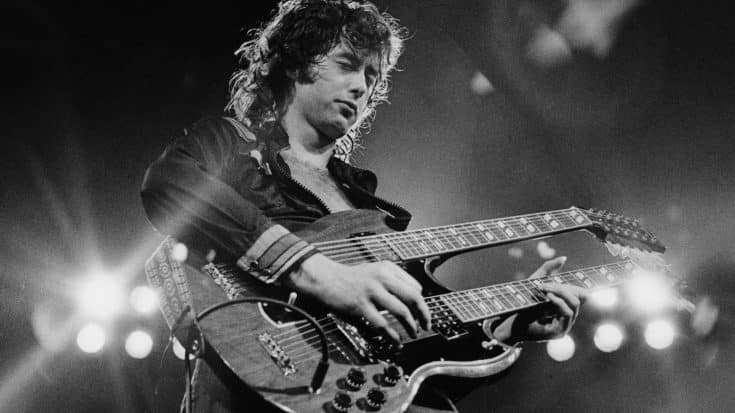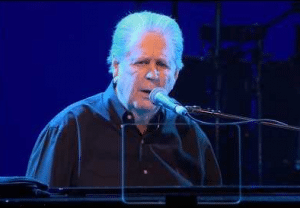The Origin Stories Of These 10 Guitar Legends

Guitarist Jimmy Page performing with his band 'Led Zeppelin' at the Seattle Coliseum, June 1972. (Photo by Robert Knight Archive/Redferns/Getty Images)
Every guitar legend has a unique origin story that led them to their iconic status. Let’s look into the beginnings of ten guitar legends:
Chuck Berry
Chuck Berry emerged as a trailblazer between 1955 and 1958, capturing the essence of post-war adolescence with his iconic songs about love, cars, and rebellion. His music became the cornerstone of rock ‘n’ roll, shaping a new cultural landscape for generations to come. Onstage, Berry’s electrifying performances were marked by his distinctive duck walk and frenetic guitar playing, captivating audiences with his raw energy and charisma.
Jack White
Jack White’s musical journey began in Detroit’s underground scene, where he initially pursued drumming. In 1997, he co-founded The White Stripes with his then-wife Meg White, marking the start of their iconic musical partnership. Their breakthrough album, “White Blood Cells,” released in 2001, propelled them to international fame, paving the way for collaborations with renowned artists such as Loretta Lynn and Bob Dylan.
Jimmy Page
Page initially gained recognition as a session musician before receiving an offer to join The Yardbirds in 1964, which he declined out of loyalty to Eric Clapton. However, when Clapton left the band a year later, Page was again approached to join but declined, recommending Jeff Beck instead. Eventually, Page accepted an offer to join The Yardbirds as a bassist, later transitioning to a solo guitarist. Following internal conflicts, Page founded The New Yardbirds in 1968, which soon evolved into the legendary band Led Zeppelin.
Joe Bonamassa
Joe Bonamassa’s journey as a blues prodigy began at a young age, with his guitar skills quickly earning him recognition in the music world. He started performing in blues venues at just 10 years old and received guidance from influential blues musicians like Danny Gatton. Joining the Blues Rock band Bloodline in his teens, Bonamassa continued to hone his craft before venturing into a solo career, where he developed his unique style and compositions.
Eric Clapton
Eric Clapton, renowned for his exceptional improvisational talent, earned the nickname “Slowhand” for his deliberate and soulful guitar-playing style. Growing up in a musical environment, Clapton received his first guitar from his grandmother and immersed himself in emulating blues legends. Joining The Yardbirds in 1963 propelled him to fame as one of the most celebrated guitarists in the British music scene, solidifying his reputation as “Slowhand.”
Dan Auerbach
As the guitarist and vocalist for The Black Keys, known for chart-topping hits like “Lonely Boy” and “Everlasting Light,” he’s earned his place in the annals of rock history. Their album “Brothers” earned them three Grammy Awards, showcasing his musical prowess and innovation. His deep-rooted love for blues, cultivated by listening to his parents’ records, has influenced his unique sound and earned him critical acclaim, including the prestigious Producer of the Year Award at the 2013 Grammy Awards.
Pete Townshend
As the lead guitarist for The Who, the iconic band behind hits like “My Generation,” he solidified his place in rock history. Inducted into the Rock and Roll Hall of Fame in 1990, his influence on music is undeniable. Initially aspiring to be a graphic artist, his grandmother’s gift of a guitar in 1956 changed the course of his life forever. Despite his success, he remained grounded, even opposing the use of psychedelic drugs during a time when they were prevalent in the music scene.
John Mayer
John Mayer is a multifaceted artist known for his skills as a songwriter, singer, guitarist, and music producer. Despite his musical prominence, Mayer’s interests extend beyond music to include live comedy, graphic design, and even column writing for magazines like Esquire. His journey into music began with the clarinet but quickly shifted to the electric guitar after being inspired by Chuck Berry’s “Johnny B. Goode” in the movie “Back to the Future.” With his first guitar gifted by his father at thirteen, Mayer’s passion for blues, ignited by Steve Ray Vaughan’s music, drove him to pursue guitar lessons fervently, leading to an obsession that concerned his parents. Despite this, Mayer found solace and expression in his instrument, which became his refuge and creative outlet amidst familial discord.
Jimi Hendrix
Music served as a sanctuary for Hendrix, offering him solace and freedom. His passion for blues and rock began in his youth, nurtured by his father who gifted him his first acoustic guitar at 16. Joining the band Rocking Kings, he honed his skills and made his mark on stage. In 1966, he met Chas Chandler, bassist of the British rock group Animals, who became his manager, forming the Jimi Hendrix Experience alongside bassist Noel Redding and drummer Mitch Mitchell in London.
Gary Clark Jr.
At eleven, Clark Jr. embarked on his musical journey, showcasing his guitar skills through small performances during his teenage years. His talent caught the attention of Clifford Antone, owner of Antone’s Music Club in Austin, who provided him with a platform to perform alongside renowned artists like Jimmie Vaughan. Supported by Vaughan and other influential figures in the local music scene, Clark Jr. made significant strides in Austin’s rock and roll community. In recognition of his contributions, he was honored with “Gary Clark Jr. Day” by the Mayor of Austin in 2001, marking a pivotal moment in his burgeoning career.


















